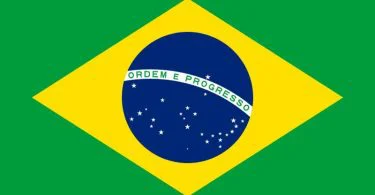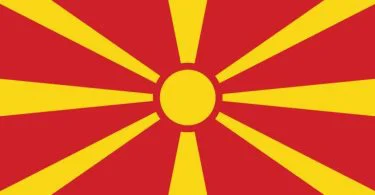Preamble
We, the people of Mongolia:
- consolidating and strengthening the independence and sovereignty of our state,
respecting and upholding the human rights and freedom, justice, and unity of our nation, inheriting and cherishing the traditions of our statehood, history and culture, considering and respecting the accomplishments of human civilization, shall aspire to the supreme goal of building and developing a humane, civic and democratic society in our motherland.
Thus, do hereby proclaim and declare this Constitution of Mongolia to the entire populace.
CHAPTER ONE. Sovereignty of Mongolia
Article 1
- Mongolia is an independent and sovereign Republic.
- Securing democracy, justice, freedom, equality, national unity and respecting the rule of law are the fundamental principles of the State activities.
Article 2
- The state structure of Mongolia shall be unitary.
- The territory of Mongolia shall only be divided into administrative units.
Article 3
- All governance power in Mongolia shall be vested upon its people. The people of Mongolia shall directly participate in State affairs and shall exercise such right through the representative organ of the State power established by their election.
- Illegitimate seizure of State power or any attempts to do so shall be prohibited.
Article 4
- The territorial integrity of Mongolia and the State borders shall be inviolable.
- The State borders of Mongolia shall be ensured by law.
- Stationing foreign military forces in the territory of Mongolia or admitting over the state border to traverse shall be prohibited without enactment of a law.
Article 5
- Mongolia shall have a multi form proprietor economy complying with the common trends of world economic development and its internal distinctiveness.
- The State shall recognize any forms of public and private properties and shall protect the owner’s rights by law.
- The rights of owners may only be restricted on grounds prescribed by the law.
- The State shall regulate the economy in order to ensure national economic security, development of all economics sectors and social development of the population.
- All livestock is a national asset and shall be under the protection of the State.
Article 6
- The land, its subsoil, forests, water, fauna, flora, and other natural assets in Mongolia shall be subject to the people’s authority and under the protection of the State.
- The land, except that in private ownership of the citizens of Mongolia, as well as the land subsoil, forests, water resources, and fauna shall be the property of the State.
- The state may give for private ownership land, other than pastures and areas under public use or reserved for the State’s special needs, only to the citizens of Mongolia. This provision shall not be applicable to ownership of the land subsoil. Citizens shall be prohibited to transfer the land in their possession to foreign nationals and stateless persons by way of sale, barter, donation or pledge as well as from transferring to others for their use without the permission from the competent authorities of the State.
- The State shall have the right to hold liable and responsible landowners in connection with their land, to exchange or reclaim it, providing compensation on the grounds of the State’s special needs, or to confiscate such land if it is used in a manner adverse to the population’s health, the interests of environmental protection and national security.
- The State may allow foreign nationals, legal persons or stateless persons to use the land for a fee during a specific period of time, and under conditions and procedures as prescribed by law.
Article 7
- The historical and cultural objects, scientific and intellectual heritage of the Mongolian people shall be under the protection of the State.
- The intellectual wealth produced by citizens shall be the property of its authors and national asset of Mongolia.
Article 8
- The Mongolian language shall be the official language of the State.
- Section 1 of this Article shall not affect the right of national minorities of population to use their native languages in learning and communication, and in their pursuit of cultural, artistic and scientific activities.
Article 9
- The State shall respect the religion, whereas the religion shall honor the State in Mongolia.
- The organs of State shall not engage in religious activities, and the religious organizations or monasteries shall not conduct political activities.
- The relationship between the State and religious organizations or monasteries shall be regulated by law.
Article 10
- Mongolia shall adhere to the universally recognized norms and principles of international law, and shall pursue a peaceful foreign policy.
- Mongolia shall enforce and fulfil in good faith its obligations under the international treaties to which it is a Party.
- The international treaties to which Mongolia is a Party, shall become effective as domestic legislation, upon the entry into force of the laws on their ratification or accession.
- Mongolia shall not comply with or abide by any international treaty or other such instruments that are incompatible with this Constitution.
Article 11
- It shall be a duty of the State to safeguarding the motherland’s independence, and ensuring national security and public order.
- Mongolia shall keep the Armed Forces for its self-defense. The structure and organization of Armed Forces, and the regulations of its military service discharge shall be prescribed by law.
Article 12
- The symbols of the independence and sovereignty of Mongolia shall be the State Coat of Arms, the Banner, the Flag, the Seal and the Anthem.
- The State Coat of Arms, the Banner, the Flag, and the Anthem shall express the historical traditions, the vision and aspiration, the unity, the justice, and the spirit of Mongolian people.
- The State Coat of Arms shall be of a circular form with the sacred white lotus flower serving as its base, and the never-ending and ever-flowering Tumen nasan (Thousands of Ages) ornamental pattern forming its main background with a blue color, signifying the eternal sky. At the center of the Coat of Arms, there shall be a depiction of the Precious Hulug (Flying Steed) combined with the golden Soyombo symbol, signifying the independence, sovereignty and spirit of Mongolia. At the top part of the State Coat of Arms, there shall be Chandmani (Wish granting Jewel) signifying the past, the present and the future, whereas at its lower part the Hourd (Wheel of Law or Dharma Chakra) as the happiness with progress and prosperity, with a green color mountain pattern, that represents the Mother – Earth, shall be depicted respectively. The Hourd shall be entwined with Hadag (silk scarf) for reverence and respect.
- The traditional Great White Banner of the unified Mongol Empire shall be the State ceremonial symbol of Mongolia.
- The State Flag shall be a combination of red, blue and red colors. The blue color at the middle part of the Flag, in proportion of its one-third size, shall symbolize the eternal blue sky, and with the red color on its two sides as symbol of the progress and prosperity. The golden Soyombo symbol shall be depicted on the red stripe next to the Flag post. The width and length of the Flag shall be 1:2 in its ratio.
- The State Seal shall be of a square form with the State Coat of Arms in its middle, and the inscription “Mongol Ulus” (The State of Mongolia) on both its sides, and shall have a lion-shaped handle. The President of Mongolia shall be a holder of the State Seal.
- The procedure for the revered use of the State symbols as well as the text and melody of the State Anthem shall be prescribed by law.
Article 13
- A capital of the State shall be the city in which the supreme organs of State permanently exist. The capital of Mongolia is the City of Ulaanbaatar.
- A legal basis for the capital of Mongolia shall be determined by law.






